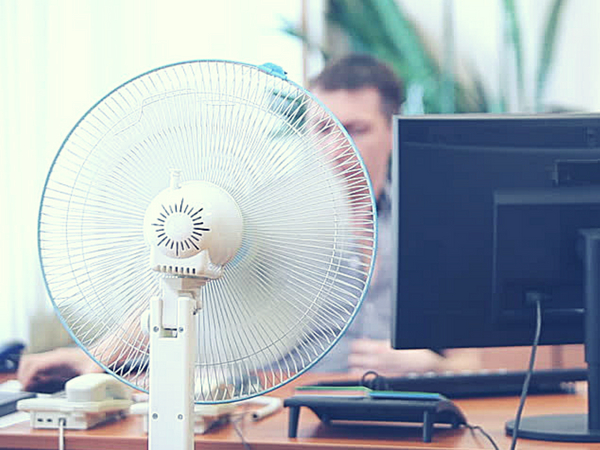Office working in this year’s record temperatures – how to handle the heatwave
The UK, much like many parts of the world, is currently experiencing an heatwave. Safe working temperatures are hugely important in any workplace. Excess heat can cause drowsiness and could lead to sloppy or unfinished work. Working in high temperatures can also potentially cause heat stress and other health related problems.
Despite the difficulties associated with hot working environments, there is no legal maximum safe working temperature. The only requirement is that workplace temperatures in buildings should be ‘reasonable’. This condition appears in the Workplace Regulations 1992 and whilst it sounds a little bit ambiguous, there are several sensible straight forward steps that can be followed to ensure working conditions are as comfortable as possible during the UK’s current heatwave.
In the absence of a legal ruling, health organisations recommend maximum safe working temperatures: 27ºC for manual workers, and 30ºC for sedentary workers.
There are six basic factors an employer should look at which includes air temperature, radiant temperature (i.e., the temperature radiating from warm objects), air velocity, humidity, and what clothing workers are expected to wear.
Controlling High Temperatures
In an office, employers can attempt to keep the maximum temperature below 30ºC. with suitable ventilation and shade, such as installing air conditioning units, even if it’s a mobile one, where you can hang the extraction tube out of a window, opening windows, turning on fans and placing them next to work stations. It might also be helpful to pull various window blinds down a little bit, to block direct sunlight, wherever appropriate. These various measures can help to keep the air fresh and the office a little cooler and allow staff to be able to concentrate better. The last time the UK saw consistently high temperatures for as long as this, was back in 1976, so it’s understandable that so many offices are just not set up for this kind of heatwave.
It’s worth noting, that if employers do invest in air conditioning units, they need to ensure that engineers are regularly servicing and maintaining the systems. Badly functioning air conditioning has led to examples of increased rather than lower temperatures.
Employers can also make staff more comfortable by allowing a sensible dress code and ensuring there are regular breaks for cooling drinks. Having access to cool, filtered water is an ideal scenario but otherwise providing a fridge for staff to be able to store cool drinks and/or access to tap water would be sufficient.
Providing a positive spin
It’s important to get an indication of what is deemed reasonable, ideally by speaking to employees and getting an overall view of how they feel about the office temperature. Its important to recognise the heat. It’s easy for employees to feel somewhat stressed by the high temperatures that they’re not accustomed to working in. They can feel less engaged when it’s sunny outside and they have to be at work, which can lead to employees pulling a sickie to embrace the hot weather while it lasts. Taking simple steps to show that employers value and appreciate their staff during hot weather will help perk employees up and reduce absenteeism. These steps can include providing ice lollies, cold drinks or summer snacks and even early finish incentives providing certain targets or project deadlines are met. This will help raise productivity as staff will appreciate the chance to make the most of their longer evenings.

